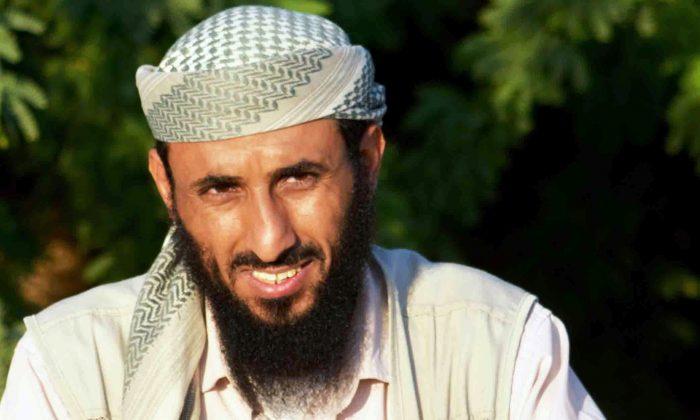Despite many beltway insiders dubbing President Obama’s administration as President Bush’s third term, the two have utilized contrary methods for curtailing terrorism. That’s not to say both have used similar methods either, most notable, the Authorization to Use Military Force (AMUF). President Obama has used AUMF to justify unilateral action abroad since he took office, however many in Congress feel undermined by his broad interpretation of the authorization.
The authorization was issued in 2001 after the September 11 attacks. Not only is it outdated, but it refers to an older terrorism network, which has since evolved. Congressman Adam Schiff (D-CA) has introduced legislation to sunset AUMF in an attempt to modernize the United States’ approach towards terrorism policy. His legislation notes that al-Qaeda was largely based in Afghanistan at the time of the 2001 attacks (which the United States invaded shortly after 9/11 and as a result al-Qaeda fled the country), core al-Qaeda is now largely decimated with key leaders either killed or captured, the end to the war in Afghanistan is drawing closer, and Congress never intended to authorize a perpetual war. President Obama in his State of the Union speech asserted he will try to get the United States away from its perpetual war footing. This language is ambiguous and does not necessarily indicate, aside from ending the war in Afghanistan, what foreign policy will consist of in the near or long term future.
Al-Qaeda has evolved into various autonomous cells in their respective regions. While many industry experts agree that core al-Qaeda is “on the run,” al-Qaeda subsidiaries are gaining strength. Jabhat al-Nusra, the official Syrian branch of al-Qaeda, has achieved significant gains in the prolonged civil war gaining regional power and influence in northern Syria. Al-Qaeda in the Arabian Peninsula (AQAP), which is based in Yemen, is thought to be the most dangerous of the al-Qaeda affiliates and has felt the brunt of US drone strikes as part of a joint effort between the Yemeni and US governments. Al-Qaeda in the Islamic Maghreb (AQIM) is located in northern and western Africa and has gained significant influence in Libya after the fall of the Gaddafi regime. They have proven to be a difficult entity to dispel and continue to recruit new members making Libya an especially volatile region. The Islamic state of Iraq and al-Sham (ISIS), formerly al-Qaeda in Iraq, has been excommunicated from the al-Qaeda affiliation for being too extreme. This designation provides a few new options for ISIS in terms of autonomy and freedom from leadership restraint but also limits the group especially when it comes to raising funds as they are no longer officially affiliated with al-Qaeda. Nonetheless they are still focused on governance and pose a threat to the United States.
Central al-Qaeda led by Ayman al-Zawahiri, who succeeded Osama bin Laden, does provide some guidance and authority, but for the most part, these cells reign autonomous in their regions with the goal of seeking governance. With the emergence of these groups (and the additions of others such as al-Shabaab in Somalia, Boko Haram in Nigeria, various Taliban offshoots in Afghanistan and Pakistan, Hezbollah in Lebanon, Hamas in Palestine), US policy must reflect a concrete strategy to combat potential threats to US embassies and attacks on the homeland as well as defining who the enemy is. AUMF is only specific to those who attacked the US on September 11, 2001 and while it makes note of future threats, core al-Qaeda (based in Afghanistan led by Osama bin Laden) has been restructured and is now an amoeba of its former self. Several policy makers, such as Director of National Intelligence James Clapper, believe the ongoing security vacuum in Syria has severe security implications for the United States because foreign fighters who train in the region return to their home countries and are then capable of planning subsequent attacks, possibly against the United States.
According to a National Journal poll of security insiders, 49 percent of those polled believe AUMF should be narrowed. AUMF was drafted and passed during a state of emergency but one insider believed it gave the executive branch too much power and left Congress with little oversight. Thirteen years and two wars later, AUMF is no longer applicable to the shifting threats facing the United States. AUMF, though interpreted by some in President Obama’s Office of Legal Counsel to be ambiguous allowing for broad authority, defined the enemy and the threat against the United States specifically as those who attacked the US on 9/11.
The main areas that need to be addressed going forward are the scope of the drone program, relations between Afghanistan and Pakistan, who exactly the United States is fighting, and how the United States should be authorized to carry out “acts of war” against non-state actors in regions where host governments may either not be doing enough or are allowing these groups to carry out violence. It is important to not violate the state sovereignty of other nations but an important balance must be struck to ensure national security interests. The unrest in Syria and regions such as Bahrain make it difficult to identify who the “good guys” are because terrorist organizations have sided with rebel groups to take advantage of security vacuums. President Obama has struggled as of late to properly diagnose effective strategies in Syria, Afghanistan, and Pakistan.
An open debate with Congress may help to open doors for the current and for future administrations to clearly identify the United States’ enemies and how to properly combat them. AUMF is outdated and must be either revised or replaced.


